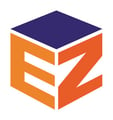The most commonly asked questions about Auto Posting Payments in EZClaim
FAQ on Auto Posting
Q. What happens if the secondary payment is posted before the primary?
A. The payment will be successfully processed, and the responsible party will remain the same unless the service line balance reaches zero, at which point the responsible party will be updated to Patient.
Q. What happens if an 835 file is posted twice?
A. If you choose to apply adjustments, they will either find a corresponding adjustment or the adjustment will be applied. Additionally, if you apply adjustments that were previously recorded, the tracking adjustment will be removed and the adjustment will be applied.
Q. What happens if an 835 is posted for a payment that was manually entered with the same reference number?
A. No additional payment or disbursements will be generated as they will all find corresponding disbursements. If you choose to apply adjustments, they will only be applied if there is no existing reference number that matches.
Q. What happens if an 835 is posted for a payment that was manually entered with a different reference number?
A. EZClaim will generate a payment based on the 835 data and proceed to post disbursements from the 835 since there are no existing matching disbursements. If the option to overpay is enabled, the claim will have a credit balance. However, if the option is disabled, posting may result in a BALANCE EXCEEDED message.
Q. How do I prevent a service line from having payments or adjustments applied?
A. To remove the service line reference, simply right-click on the service line(s) and choose the option to Remove Service Line Reference(s).
Q. How does the program match the payment data to the service lines?
A. When EZClaim sends an 837 file to the payer, it assigns a special ID number to each service line (known as REF*6R for ANSI enthusiasts). This specific ID number is then returned in the 835 ERA, and EZClaim utilizes it to match the corresponding service line.
In the event that the special ID is not found in the 835, EZClaim resorts to secondary matches, which examine the CLP01 field to attempt to match the claim based on the invoice number or Claim ID, along with the patient's first and last name.
EZClaim also considers the procedure code, charge, service date, and modifiers if necessary.
Q. Why does the program separate out Provider-Level Adjustments rather than processing them within an 835 ERA file?
A. When payers include Provider Level Adjustment (PLA or PLB) information in an 835 file, it is common for them to not provide the detailed information at the claim level or service line level that EZClaim requires to accurately complete the auto-posting process.
For instance, during the review process, the payer may determine that they owe you interest or that you have been overpaid, resulting in payment adjustments to balance your account.
We recommend reaching out directly to the payer to obtain specific data related to the patient, claim, or service, which can then be manually posted in EZClaim.
Once you have the necessary information from the Provider Level Adjustment, you can proceed to auto-post the remaining data found in the 835 file.
Q. What if my payer requires “unbundled” PR adjustments?
A. In previous versions of EZClaim, the system would export all patient responsibility codes into a single PR2, regardless of whether there were any PR2 adjudicated or multiple PR codes adjudicated.
However, in 2021, certain payers, notably Medicaid, required the unbundling of PR codes in electronic secondary claims. To address this requirement, a new feature was introduced in release 671. This feature allows you to easily unbundle the PR codes as needed.
Please review the PR Adjustments - Special Situation article for instructions and detailed information about this feature.
